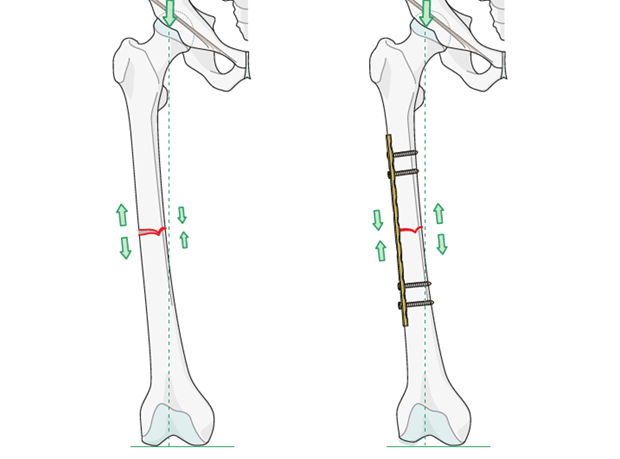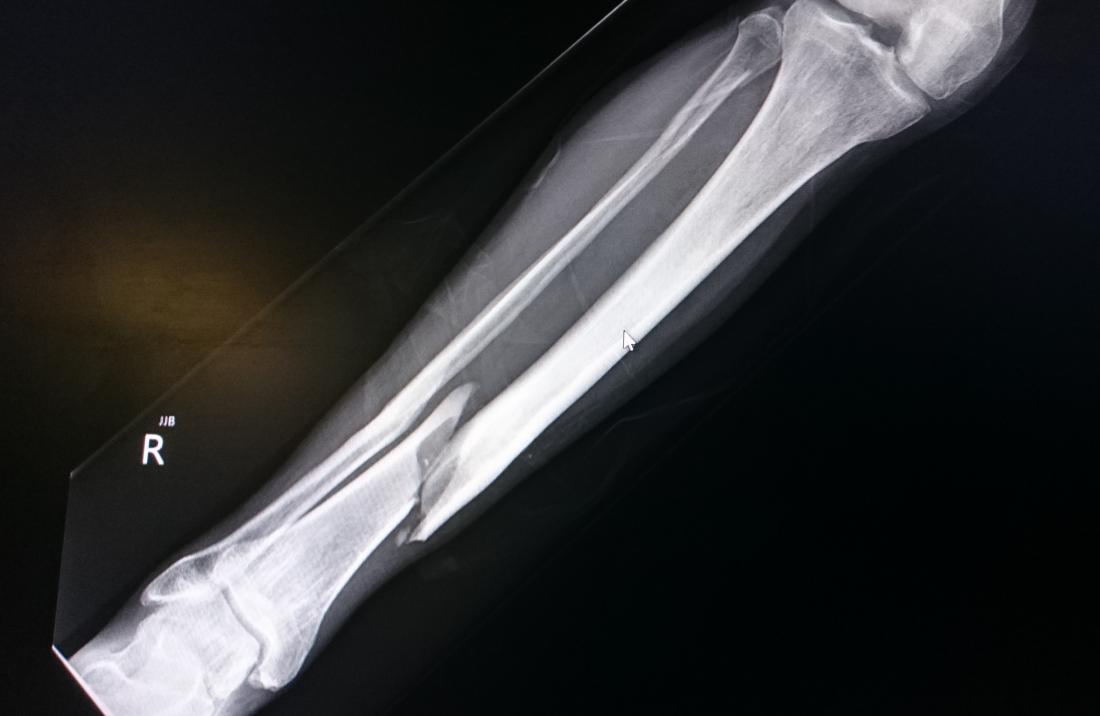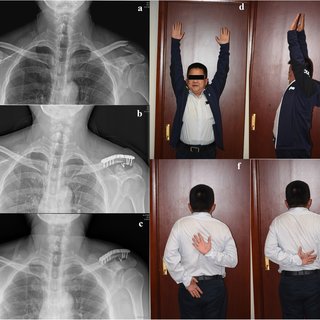Introduction
When it comes to treating complex bone fractures, locking plate surgery has emerged as an advanced and effective solution. This surgical technique involves the use of specialized plates and screws to stabilize and support fractured bones during the healing process. Locking plate surgery offers numerous benefits over traditional methods, providing patients with faster recovery times, improved outcomes, and enhanced long-term functionality. In this article, we will explore the intricacies of locking plate surgery, its advantages, and its applications in the field of orthopedics.
Locking plate surgery is a modern orthopedic technique used to treat fractures in various bones, including the femur, tibia, humerus, and radius. Unlike traditional fracture fixation methods, which rely on compression between the plate and bone, locking plates are designed to provide stable fixation through a mechanism that locks the screws in the plate. This feature prevents motion between the bone and the plate, allowing for better stability during the healing process.
How Locking Plates Work
Locking plates consist of two main components: the plate itself and the locking screws. The plate is a rigid metal structure that is contoured to match the bone's shape and is placed along the fractured area. The locking screws, which are inserted into the bone through predetermined holes in the plate, engage with the plate's threaded portions. As the screws are tightened, they lock into the plate, creating a fixed-angle construct that stabilizes the fracture sit.

The Benefits of Locking Plate Surgery
Locking plate surgery offers several advantages compared to conventional fracture fixation techniques:
a. Improved Stability
The locking mechanism of the plate ensures enhanced stability, reducing the risk of implant failure and non-union. This stability allows for early mobilization, promoting faster healing and rehabilitation.
b. Preservation of Blood Supply
Locking plate surgery minimizes damage to the bone's blood supply, as it requires fewer screws and does not rely on compression. Preserving the blood supply is crucial for proper bone healing and reducing the risk of complications.
c. Versatility
Locking plates come in various shapes and sizes, making them adaptable to different fracture patterns. This versatility allows orthopedic surgeons to choose the most appropriate plate for each patient, optimizing the treatment outcome.
d. Reduced Risk of Infection
The locking plate system involves a minimally invasive approach, reducing the risk of infection compared to open reduction and internal fixation surgeries. The smaller incisions and decreased soft tissue dissection contribute to a lower chance of postoperative complications.
Indications for Locking Plate Surgery
Locking plate surgery is recommended for a wide range of fractures, including:
a. Complex Fractures
Locking plates are particularly suitable for complex fractures, such as comminuted fractures (where the bone breaks into several pieces) and fractures with poor bone quality (e.g., osteoporosis). The stable fixation provided by locking plates improves the chances of successful healing in these challenging cases.
b. Periarticular Fractures
Fractures near joints, known as periarticular fractures, can be effectively treated with locking plate surgery. The fixed-angle construct helps maintain joint alignment and stability, promoting optimal functional recovery.
c. Fractures in Osteoporotic Bones
Patients with osteoporosis often have fragile bones that require special attention during fracture treatment. Locking plate surgery provides a reliable solution, as it can secure the fractured bone even in the presence of low bone density.

The Surgical Procedure
The surgical procedure for locking plate surgery generally follows these steps:
Preoperative planning: The orthopedic surgeon performs a detailed assessment of the fracture and plans the surgical approach. This includes selecting the appropriate plate size and determining the optimal screw trajectory.
Incision and exposure: A small incision is made near the fractured area, and the soft tissues are carefully dissected to expose the bone.
Plate placement: The locking plate is positioned along the bone's surface and secured using screws. The plate's design and contour should match the bone anatomy for optimal stability.
Screw insertion: Locking screws are carefully inserted through predetermined holes in the plate, engaging with the threaded portions of the plate.
Final fixation and closure: The screws are tightened, creating a stable construct. The incision is then closed, and appropriate wound care is provided.
Postoperative Care and Rehabilitation
After locking plate surgery, patients are typically required to follow a specific postoperative care plan, including:
Pain management: Medications are prescribed to manage postoperative pain.
Physical therapy: Rehabilitation exercises are initiated to restore joint mobility and muscle strength.
Follow-up appointments: Regular check-ups allow the surgeon to monitor the healing progress and make any necessary adjustments to the treatment plan.
Potential Complications
While locking plate surgery is generally safe and effective, there are potential complications that patients should be aware of, including:
Infection at the surgical site
Delayed bone healing or non-union
Malalignment of the bone
Implant failure or loosening
Nerve or blood vessel damage
It is important for patients to discuss potential risks and complications with their orthopedic surgeon before undergoing the procedure.
Advancements in Locking Plate Technology
Locking plate technology continues to evolve, with ongoing advancements aimed at improving patient outcomes. Some notable advancements include:
Biocompatible materials: The development of newer materials, such as titanium alloys, enhances the strength and biocompatibility of locking plates.
Improved plate designs: Locking plates are now available in anatomical shapes, providing a better fit and reducing the need for plate bending.
Locking screw options: Surgeons can choose from a variety of screw options, including polyaxial screws, which offer greater flexibility in screw placement.
These advancements contribute to more efficient and reliable fracture fixation, leading to better patient satisfaction and outcomes.
Alternative Treatments for Bone Fractures
While locking plate surgery has proven to be highly effective, there are alternative treatments available for bone fractures, depending on the specific case. These may include:
Casting or splinting: Simple fractures that do not require surgical intervention can often be treated with casting or splinting, allowing the bone to heal naturally.
Intramedullary nailing: This technique involves the insertion of a metal rod into the medullary canal of the bone to stabilize the fracture.
External fixation: In certain cases, an external frame with pins is used to stabilize the fractured bone until it heals.
The choice of treatment depends on various factors, including the type and location of the fracture, patient age, and overall health.
Locking Plate Surgery in Different Orthopedic Specialties
Locking plate surgery finds applications in various orthopedic specialties, including:
Trauma surgery: Locking plates are commonly used to treat fractures resulting from traumatic injuries, such as fractures caused by accidents or falls.
Sports medicine: Athletes often sustain fractures during sports activities. Locking plates provide stable fixation and promote quicker return to sports.
Orthopedic oncology: In cases where tumors affect bone integrity, locking plates can be used to stabilize the bone after tumor resection.
The versatility of locking plate surgery makes it a valuable tool in the orthopedic armamentarium.
Case Studies: Successful Outcomes with Locking Plate Surgery
Numerous case studies highlight the success of locking plate surgery in treating various fractures. Examples include:
Case Study: Distal Femur Fracture
A patient with a severe distal femur fracture underwent locking plate surgery. The stable fixation provided by the locking plate allowed for early mobilization, and the patient achieved full recovery within six months.
Case Study: Proximal Humerus Fracture
An elderly patient with a comminuted proximal humerus fracture underwent locking plate surgery. The fixed-angle construct provided excellent stability, enabling the patient to regain shoulder function and resume daily activities.
These case studies demonstrate the efficacy of locking plate surgery in achieving positive outcomes for patients with complex fractures.

Frequently Asked Questions (FAQs)
Locking plate surgery is performed under anesthesia, so patients do not experience pain during the procedure. However, mild discomfort and pain can be expected during the recovery phase, which can be managed with pain medications prescribed by the surgeon.
How long does it take to recover from locking plate surgery?
The recovery time varies depending on the fracture type, patient age, and overall health. In general, it can take several weeks to months for the bone to heal completely, and full recovery may take several months to a year.
Can locking plates be removed after the fracture has healed?
In some cases, locking plates can be removed once the fracture has healed, especially if they cause discomfort or restrict joint movement. However, this decision is made on an individual basis and should be discussed with the treating orthopedic surgeon.
Are there any restrictions after locking plate surgery?
After locking plate surgery, patients may need to avoid activities that put excessive stress on the treated bone or joint. Physical therapy will help guide patients through the rehabilitation process and gradually reintroduce activities as the bone heals.
Are there any age limitations for locking plate surgery?
Locking plate surgery can be performed on patients of various ages, including children and the elderly. The decision to undergo surgery is based on the individual's overall health, fracture characteristics, and the potential benefits of surgical intervention.
Conclusion
Locking plate surgery represents a significant advancement in the field of orthopedics, providing a highly effective and versatile approach to treating complex bone fractures. With improved stability, faster healing times, and better long-term outcomes, this surgical technique offers patients a reliable solution for restoring bone integrity and functionality. As technology continues to advance, locking plate surgery is poised to further revolutionize fracture treatment, benefiting patients of all ages and improving their quality of life.
How to Buy Orthopaedic Implants and Orthopaedic Instruments?
For CZMEDITECH, we have a very complete product line of orthopedic surgery implants and corresponding instruments, the products including spine implants, intramedullary nails, trauma plate, locking plate, cranial-maxillofacial, prosthesis, power tools, external fixators, arthroscopy, veterinary care and their supporting instrument sets.
In addition, we are committed to continuously developing new products and expanding product lines, so as to meet the surgical needs of more doctors and patients, and also make our company more competitive in the whole global orthopedic implants and instruments industry.
We export worldwide, so you can contact us at email address song@orthopedic-china.com for a free quote, or send a message on WhatsApp for a quick response +86-18112515727.
If want to know more information,click CZMEDITECH to find more details.
English
Français
Русский
Español
العربية
Português
Deutsch
italiano
日本語
한국어
Nederlands
Tiếng Việt
ไทย
Polski
Türkçe
አማርኛ
ພາສາລາວ
ភាសាខ្មែរ
Bahasa Melayu
ဗမာစာ
தமிழ்
Filipino
Bahasa Indonesia
magyar
Română
Čeština
Монгол
қазақ
Српски
हिन्दी
فارسی
Kiswahili
Slovenčina
Slovenščina
Norsk
Svenska
українська
Ελληνικά
Suomi
Հայերեն
עברית
Latine
Dansk
اردو
Shqip
বাংলা
Hrvatski
Afrikaans
Gaeilge
Eesti keel
Māori
नेपाली
Oʻzbekcha
latviešu
অসমীয়া
Aymara
Azərbaycan dili
Bamanankan
Euskara
Беларуская мова
भोजपुरी
Bosanski
Български
Català
Cebuano
Corsu
ދިވެހި
डोग्रिड ने दी
Esperanto
Eʋegbe
Frysk
Galego
ქართული
guarani
ગુજરાતી
Kreyòl ayisyen
Hausa
ʻŌlelo Hawaiʻi
Hmoob
íslenska
Igbo
Ilocano
Basa Jawa
ಕನ್ನಡ
Kinyarwanda
गोंगेन हें नांव
Krio we dɛn kɔl Krio
Kurdî
Kurdî
Кыргызча
Lingala
Lietuvių
Oluganda
Lëtzebuergesch
Македонски
मैथिली
Malagasy
മലയാളം
Malti
मराठी
ꯃꯦꯇꯥꯏ (ꯃꯅꯤꯄꯨꯔꯤ) ꯴.
Mizo tawng
Chichewa
ଓଡ଼ିଆ
Afaan Oromoo
پښتو
ਪੰਜਾਬੀ
Runasimi
Gagana Samoa
संस्कृत
Gaelo Albannach
Sepeti
Sesotho
chiShona
سنڌي
Soomaali
Basa Sunda
Wikang Tagalog
Тоҷикӣ
Татарча
తెలుగు
ትግንያውያን
Xitsonga
Türkmençe
संस्कृत
ئۇيغۇرچە
Cymraeg
isiXhosa
ייִדיש
Yorùbá
isiZulu













